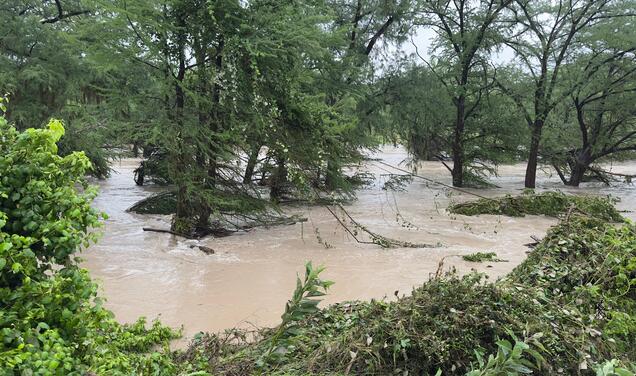
How do you think the outbreak has been handled so far in the medical/research arena?
In defining the virus, in getting a good start on anti-viral treatment and vaccine development, we’ve done a heck of a job. We’ve done pretty well with treatment and with quarantining in some instances. But because we haven’t done a sufficient number of diagnostic tests, we don’t know how many people are infected and how many people should be quarantined. We don’t know a whole lot. The ramp-up of testing has been a major failure.
As this epidemic unfolds, what can we expect to see and over what time frame?
No one knows. The epidemic is just getting started. It’s seeded most of the country. I suspect we will see a fairly major outbreak over the next few months, and then it probably will wane over summer, and we may see recurrence in the fall. That’s based on analogy to influenza outbreaks, the only comparative outbreak we have had. But it doesn’t necessarily follow that COVID-19 will behave like influenza. They are different viruses, with different responses to temperature, to humidity; it may be transmitted differently … it’s a guess.
What are the most misunderstood, least publicized or most unknown factors about COVID-19 that we need to understand?
This is a brand-new virus. Perhaps something like this happened a long time ago but coronaviruses weren’t identified. In the 1960s, coronavirus was discovered as one of the minor causes of common colds; there were just a few cases. In the 21st century, first we had SARS and then MERS. They both started to spread and then stopped in humans. COVID-19 is more contagious than either of those but less lethal.
Do medicines help?
There are no specific medicines for this. Anti-virals are easier than vaccines to develop and they take less time. We as nation have developed anti-virals against influenza, HIV, and other viral diseases. The fastest way to effective medicines is to learn through testing that a drug already being used for another condition is safe and effective. Another way is to test a drug that was effective against SARS — for example, a drug made by Gilead is being tested right now against COVID-19; even if proved effective, such drugs wouldn’t be in sufficient supply for use this spring. The best we can hope is that they might be useful in a subsequent outbreak.
Can testing help?
The point of testing is to find out what’s going on. And it does help in direct patient care. Testing is important to slow down the spread of the virus so that medical facilities can catch up with onslaught of the epidemic. If you let the virus run rampant, we will have a rapid peak, and it will overrun all the facilities. If we can blunt it, or “flatten the curve,” and spread the peak out over a longer period of time, it’s much easier for medical facilities to handle this epidemic.
What are other goals in epidemiology?
We need answers to a lot of questions. What is the reproductive number — how many people are infected by one person? We want to know about mortality. What is the seriousness and the spectrum of disease in each age group — by decile and by chronic disease? A study from China shows 15 percent mortality in those older than 80. You would work much harder to prevent infection in patients older than 80 than the younger groups. How many people have sub-clinical symptoms? How many have mild clinical symptoms — colds and sore throats? How many develop pneumonia?
We have seen so far that this virus seems to pass over children younger than 10 or create only mild symptoms. Why is that?
We fundamentally don’t know. The distribution of illness among various age groups is interesting. The lack of serious disease in the very young and its amplification in very old is also interesting. In young people, it is in distinct contrast to influenza, which is a serious disease for the very young. The lack of serious disease is not due to prior exposure to the virus and immune mechanisms. If not due to immunity, what is it due to? With older people, immunity wanes with time. This is a new virus, to which people do not have antibodies or cell-based immunity. They haven’t been exposed. It may have to do with compromise of the host defenses in general. We know that both influenza and pneumonia are both more dangerous to older people.
What makes vaccine development more or less challenging?
The easiest, quickest path to a successful vaccine is to use a technology already approved for another infection, or a technique that worked for SARS. I’m optimistic because there was development work that went on with SARS vaccine — it looked as if it were going to be successful — but it didn’t reach the licensing phase because the SARS virus disappeared. One problem with some vaccines in testing is that they are trying technology that is entirely new. That’s an enormous hurdle.
If we can make a vaccine, when would it be ready?
If you do really, really well, the total time from now to getting a vaccine is about two years — and that is really fast. There are a number of vaccine efforts under way, with some going into clinical trials shortly — some by commercial companies, some at NIH, some at small biotech companies.
What factors keep vaccine development from being faster?
One problem: If the infection goes away (for example, the flu recedes in summer), you can’t test whether the vaccine works. My prediction is that won’t happen with this virus; it’s seeded so widely. Generally, vaccine development requires sequential stages of clinical testing, and simultaneously, development of reliable, consistent methods of manufacturing the product. After each stage and sub-stage, we analyze the data and reach a go/no-go decision point. All of this takes time and in later stages becomes very expensive. The average cost of developing a vaccine is about $1 billion; usually the private sector is not going to invest unless they think it’s going to be successful.
What is this epidemic teaching us? How can we do better next time?
The strategy in the beginning was containment. But if you don’t know whom to contain because you haven’t done testing, your containment policy won’t work as well. We did not prepare fast enough: We should have ramped up testing much faster, and we should have involved commercial labs immediately. Part of this also was a result of disbanding the group in the White House responsible for epidemic/pandemic preparedness and global health security in 2018. We’re learning a lot.
As the COVID-19 pandemic takes hold, what are the bigger questions that need to be answered?
Why are we seeing three outbreaks of coronavirus in the 21st century when we hadn’t seen any before? And there have been new diseases in the last 50-70 years — HIV, Lyme. Usually, it has to do with humans perturbing their environment. HIV came from monkeys in Africa; Lyme came from white-footed mice and increasing population of deer, in part from habitat loss. We know the virus SARS-cov-2 that causes COVID-19 is an animal virus in bats and in a certain number of animals. They appear live in Chinese markets or they are butchered. What has happened in Chinese markets, what are we doing differently now that we weren’t doing before?
Interview conducted and condensed by Karla Cook









4 Responses
Wayne Klayman
4 Years AgoDr. Douglas’ Thoughts Now?
I just read a piece from “We Roar” from Spring of 2020, in which Dr. Douglas predicted a COVID-19 vaccine was probably years away from development. Dr. Douglas’ impeccable credentials make me curious to hear his thoughts now that nearly half the country has already been vaccinated, but I cannot locate any comments from him on the current state of the three vaccines readily available in the U.S. Anyone can be wrong — even experts — but my intent is not to criticize him but merely to know if he thinks the vaccines are the result of unprecedented diligence in the research community or a panacea that was rushed to market to expedite the reopening of the economy. He was pretty clear and concise in his prediction last year when, nine months after his remarks on “We Roar,” the first inoculations were being given.
Thomas O’Neill *70
5 Years AgoDouglas on Vaccines
This is the most insightful piece I have read so far today on this suddenly vital subject.
Thanks,
Nithila Peter
5 Years AgoPast and Present
“ ... And there have been new diseases in the last 50-70 years — HIV, Lyme. Usually, it has to do with humans perturbing their environment. HIV came from monkeys in Africa; Lyme came from white-footed mice and increasing population of deer, in part from habitat loss. We know the virus SARS-cov-2 that causes COVID-19 is an animal virus in bats and in a certain number of animals ...”
In a simple and effective way, Gordon placed this pandemic in context. History educates and scales the trouble we currently have and gives it proportion. This is reassuring, in paradoxical ways; the threat is imminent, but now it can be better understood and to that extent approached better.
Thomas Mees ’56
5 Years AgoThoughtful and Insightful
One off the most thoughtful and insightful commentaries on the current state of our battle with CIVID-19 — I would expect nothing less from an expert like our old and dear friend Gordon. Unfortunately we are at the mercy of the politicians rather than the experts.